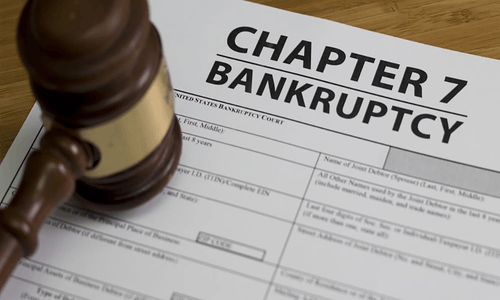Chapter 7 Bankruptcy Overview
Chapter 7 bankruptcy, also known as liquidation bankruptcy, is a type of bankruptcy that is available to individuals and businesses who are unable to pay their debts. It is designed to provide relief to debtors by allowing them to discharge certain types of debt and start anew. In this article, we will discuss what Chapter 7 bankruptcy is, how it works, and the benefits and drawbacks of filing for Chapter 7 bankruptcy.
What is Chapter 7 bankruptcy?
Chapter 7 bankruptcy is a legal process in which a debtor’s assets are liquidated to pay off creditors. In other words, the debtor’s non-exempt assets are sold to pay off as much of their outstanding debt as possible, and the remaining debt is discharged. The discharge of debt means that the debtor is no longer legally responsible for paying off the remaining debt.
How does Chapter 7 bankruptcy work?
To file for Chapter 7 bankruptcy, the debtor must first file a petition with the bankruptcy court in their jurisdiction. Once the petition is filed, an automatic stay is put into effect, which stops all collection efforts by creditors, including phone calls, letters, and legal action.
The bankruptcy court appoints a trustee to oversee the liquidation of the debtor’s assets. The trustee is responsible for identifying and valuing the debtor’s non-exempt assets and selling them to pay off as much of the outstanding debt as possible.
Not all assets are subject to liquidation, however. Certain assets, such as a primary residence, personal belongings, and retirement accounts, are exempt from liquidation under state and federal law. The debtor is allowed to keep these exempt assets and continue to use them after the bankruptcy is discharged.
Once the assets are liquidated and the proceeds are distributed to creditors, the remaining debt is discharged, and the debtor is no longer legally responsible for paying it off. However, not all debts can be discharged in Chapter 7 bankruptcy, including student loans, certain taxes, and child support payments.
Benefits of Chapter 7 bankruptcy
One of the main benefits of Chapter 7 bankruptcy is that it allows the debtor to start anew and wipe out most of their outstanding debt. It can be a powerful tool for individuals and businesses who are struggling financially and unable to pay off their debt.
Another benefit is that it puts an immediate stop to all collection efforts by creditors, including phone calls, letters, and legal action. This can provide much-needed relief to debtors who are facing a barrage of collection efforts and may be at risk of losing their assets or facing wage garnishment.
Drawbacks of Chapter 7 bankruptcy
One of the main drawbacks of Chapter 7 bankruptcy is that it can have a negative impact on the debtor’s credit score. A Chapter 7 bankruptcy will remain on the debtor’s credit report for up to 10 years, which can make it difficult to obtain credit or loans in the future.
Another drawback is that not all debts can be discharged in Chapter 7 bankruptcy, including student loans, certain taxes, and child support payments. This means that the debtor may still be responsible for paying off some of their outstanding debt after the bankruptcy is discharged.
Finally, the liquidation of assets can be a daunting and emotionally taxing process for debtors, especially if they are forced to sell assets that have sentimental value or are essential to their daily lives.
Conclusion
Chapter 7 bankruptcy can be a powerful tool for individuals and businesses who are struggling financially and unable to pay off their debt. It provides a fresh start by allowing debtors to wipe out most of their outstanding debt and start anew. However, it is not without its drawbacks, including a negative impact on the debtor’s credit score and the liquidation of assets. Before filing for Chapter 7 bankruptcy, it is important to consult with an experienced bankruptcy attorney to determine whether it is the right choice

